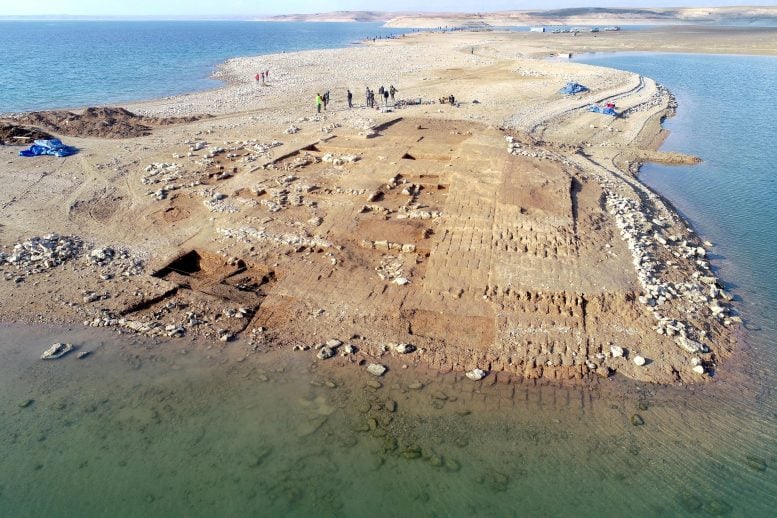The settlement emerged from the waters of the Mosul reservoir, which is located in northern Iraq and includes the Mosul Dam (once known as Saddam Dam), earlier this year as the water levels dropped due to an extreme drought in the country.

The archaeological site of Kemune in the dried-up area of the Mosul reservoir, Iraq. Universities of Freiburg and Tubingen, KAO/Zenger
The city, which was discovered by a team of German and Kurdish archaeologists, dates back to the Mittani Empire era, in the Bronze Age, and was once located on the Tigris River, the University of Freiburg said in a statement released Monday.
/https://tf-cmsv2-smithsonianmag-media.s3.amazonaws.com/filer_public/ab/0b/ab0baaee-09b3-4782-b9ae-f7becfe95f20/csm_22-05-30_7_kemune_2022_332129a721.jpg)
The Tigris and Euphrates rivers form a region between them known as Mesopotamia, which was the scene of Biblical events.
The university added: “The extensive city with a palace and several large buildings could be ancient Zakhiku – believed to have been an important center in the Mittani Empire (ca. 1550-1350 BC).”
/https://tf-cmsv2-smithsonianmag-media.s3.amazonaws.com/filer_public/02/f2/02f21be8-5f87-4408-b9f1-16d1b6bc85f4/csm_22-05-30_12_kemune_2022_2ae9d32430.jpg)
The university explained that Iraq is “one of the countries in the world most affected by climate change” and that “to prevent crops from drying out, large amounts of water have been drawn down from the Mosul reservoir – Iraq’s most important water storage – since December.”

A restorer carefully retrieves the cuneiform tablets from an opened pottery vessel in the laboratory of the excavation team in Duhok. Universities of Freiburg and Tubingen, KAO/Zenger
This in turn led to the water level in the reservoir dropping and revealing the Bronze Age city that had been submerged for decades. It had never undergone any archaeological investigation before.

In its statement, the university said that the recently revealed ancient city is located at the archaeological site of Kemune, in the Kurdistan Region of Iraq and which was itself first discovered in 2013 when the reservoir’s water levels dropped back then, too.
But this time, the archaeologists had to act very quickly to excavate and document the new site before it was submerged again.

Archaeologists and workers excavate the walls of a large building believed to have been a storage building from the time of the Mittani Emire. Universities of Freiburg and Tubingen, KAO/Zenger
The researchers managed to map the city and in addition to the palace, which had been partially documented in 2018, several other large buildings were discovered, including a massive fortification with walls and towers. The archaeologists also discovered a multi-story storage building and an industrial complex.

Aerial view of the excavations at Kemune with Bronze Age architecture partly submerged in the lake. Universities of Freiburg and Tubingen, KAO/Zenger
The university said: “This good preservation is due to the fact that the city was destroyed in an earthquake around 1350 BC, during which the collapsing upper parts of the walls buried the buildings.”